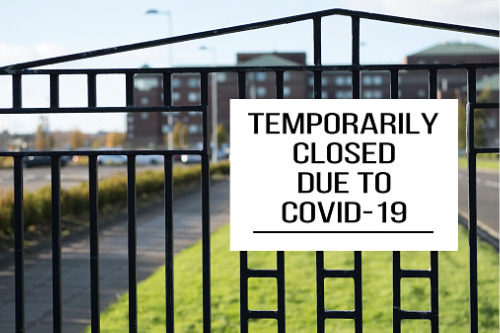

It would be easy to think that leaving any building alone would reduce its risk level – after all, fewer people means fewer accidents. However, anyone in the insurance industry will tell you that simplistic view is far from accurate.
Nowhere is that clearer than in the UK’s universities and research laboratories, which look set to remain empty for the foreseeable future amid the COVID-19 pandemic. New research from Zurich Insurance has highlighted that between 2016 and 2019, its university customers were hit with £15 million worth of water damage – and with buildings empty, the risk of water damage is on the rise.
In its deep dive into its claims data, the insurer discovered that nearly £9 million of that 2016-2019 figure was incurred across just 32 major accidents. It also found that research universities are more than twice as likely to suffer from ‘escape of water’ damage to their premises – the kind of claim you would associate with a leaky pipe – and that the cost of this damage is usually three times that of teaching universities because of the specialist equipment these facilities contain.
“Water damage to university buildings can be devastating, often destroying high-value research equipment which can disrupt teaching and student satisfaction,” said Tilden Watson, head of education at Zurich. “On top of this, many years of research can be jeopardised or lost, as well as the ability to maintain and secure grant funding which can reduce overall research revenues.
“Sometimes, regular inspections and early detection can mean the difference between small damage that’s quick to fix and a loss that costs several hundreds of thousands of pounds to rectify while disrupting research projects and contracts for many months.”
The research highlighted that contractor error and poor workmanship were the leading causes of losses – making up 41% of claims and primarily caused by new build and refurbishment projects. Other issues included failure of compression joints (making up 22% of claims), recent piping installations (16%), and blocked drains (9%).
It also pointed to one notable claim involving the University of Surrey in March 2018 – it suffered when a cold water main pipe on the roof of an academic building froze and split. When the pipe thawed, water was forced into an open riser and sent water across four floors of the building, damaging equipment and the building itself.
“Water damage can have a huge impact on any organisation. For a university, the damage could affect students and their courses and cutting edge research – often working to tight deadlines and affecting multiple partners,” said Stephen Wells, director of estates, facilities and commercial services at the University of Surrey. “So it is essential that we have confidence we have done all we can to minimise the risk of any damage occurring, and also have everything in place to respond quickly to contain any incident and to begin the recovery process immediately.”
Zurich also highlighted a number of key prevention tips, including: hiring skilled contractors; regularly testing systems, including thoroughly pressure testing all plumbing systems; having a robust water safety plan in place; regularly maintaining plumbing and heating systems; and investing in sensors and water leak detection technology.
